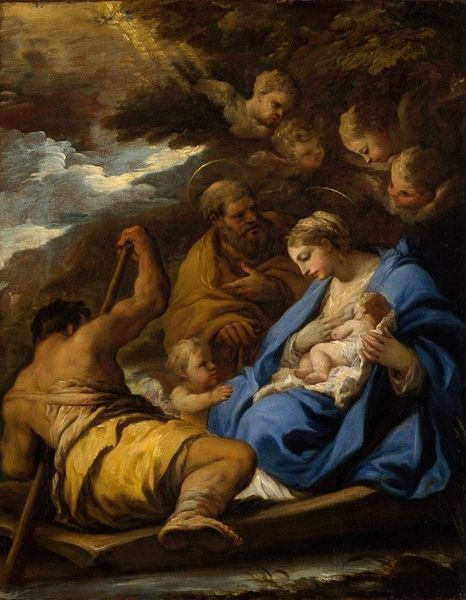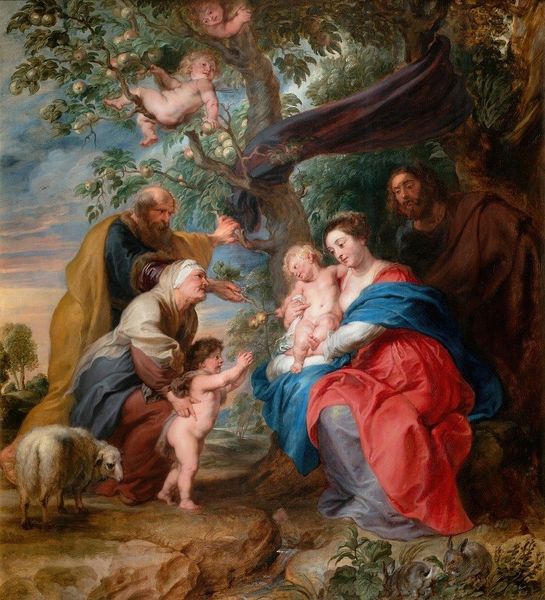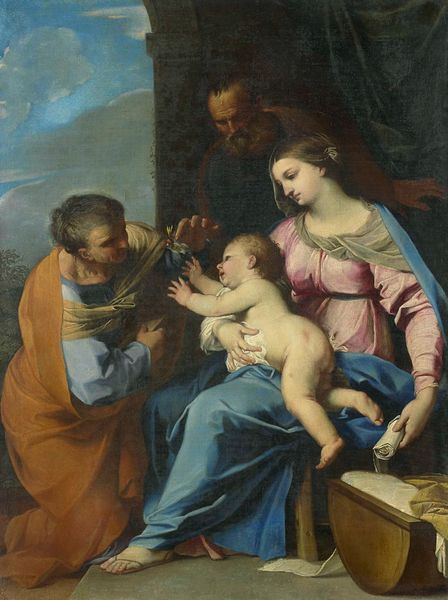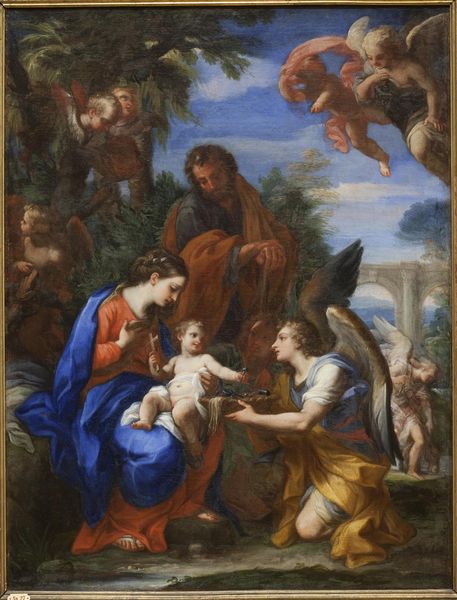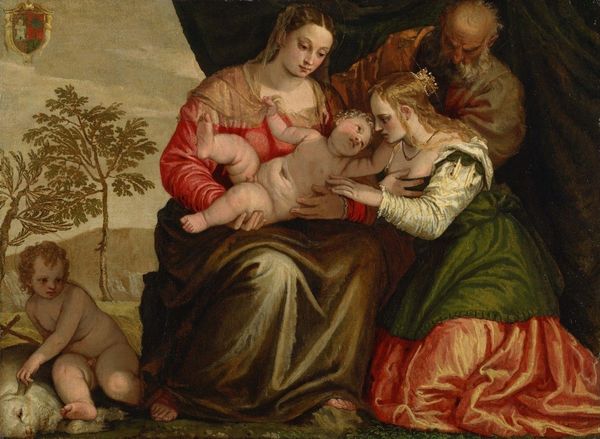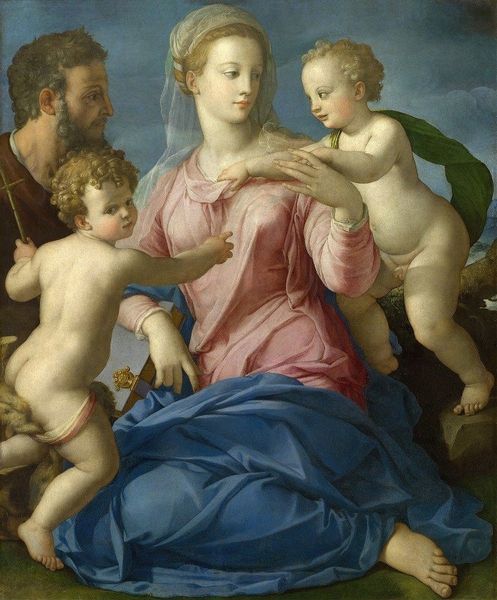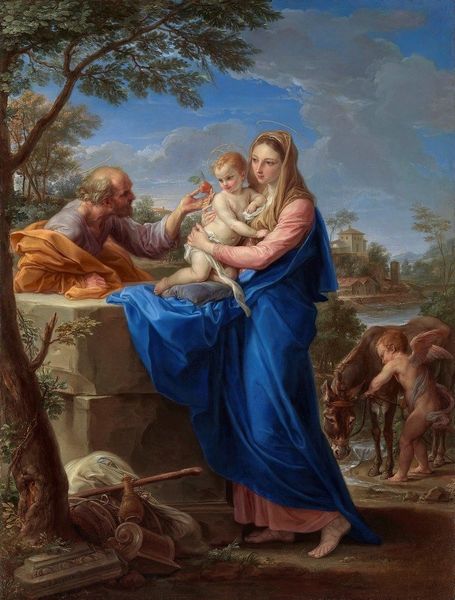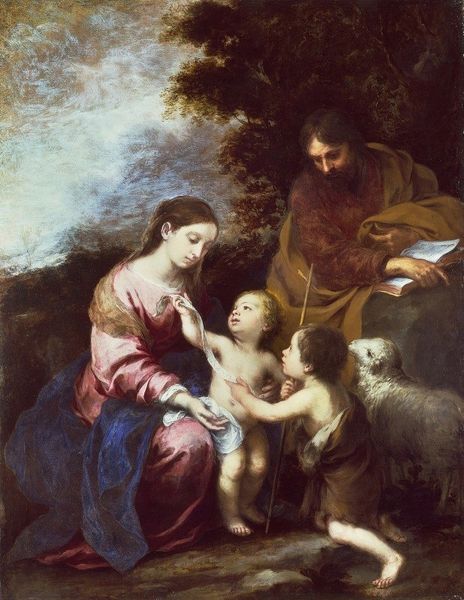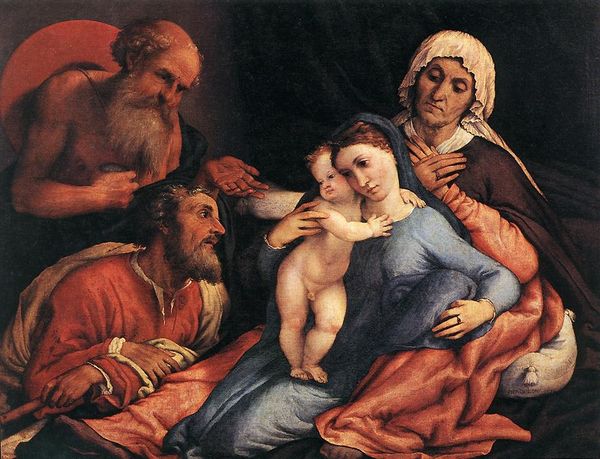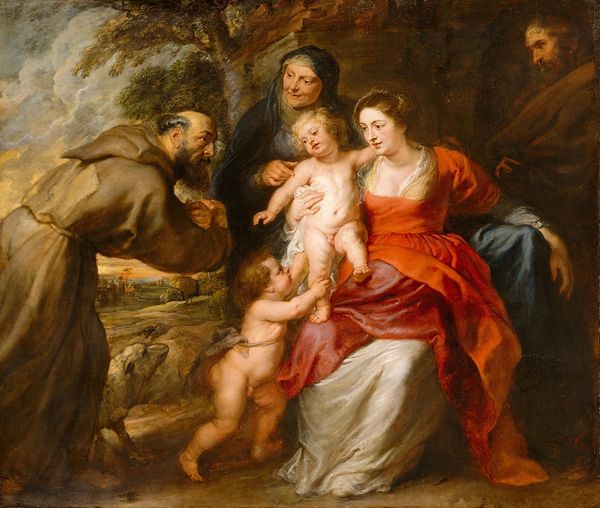
painting, oil-paint
#
portrait
#
allegory
#
baroque
#
painting
#
oil-paint
#
group-portraits
#
history-painting
Copyright: Public Domain: Artvee
Curator: Sebastiano Ricci painted “The Holy Family with Angels” around 1700, rendering a tender domestic scene in oil on canvas. Editor: Immediately, the cherubic angels and gentle figures convey a sense of serenity, even beatitude. It is the kind of image that would put someone at ease. Curator: Yes, this work fits neatly within the established visual rhetoric surrounding depictions of the Holy Family. Think about how religious institutions used paintings like this to convey moral lessons and social order, reinforcing traditional family roles. Editor: I agree with the point of social context but also think about power relations in how tenderness and piety often erase marginalized narratives. Who is represented, and how, serves to shape public perception. Curator: And Ricci positions Saint Joseph rather far in the background, peering over a book as Mary and the infant Jesus take center stage, doesn’t he? His marginalization underscores the prevalent emphasis on Mary’s role within Catholic doctrine at the time. It is very much by design. Editor: Precisely. Joseph is almost an observer, disconnected. This composition reinforces not just Mary's importance, but also normative ideas around maternity as inherently virtuous and self-sacrificing, ignoring all its complications. Also, let’s look at the implications for single mothers, who are completely left out of the frame. Curator: Certainly, Ricci was catering to an established market that embraced this type of symbolism and iconography. This style of painting served an important role in communicating messages about faith and familial devotion in an era defined by baroque excess and increasingly visible social inequality. Editor: Reflecting on the painting as a whole, I see a representation steeped in faith and artistic skill, which, from our position now, requires more scrutiny in our reading. Curator: Indeed. Viewing it through this lens helps us better understand the intentions of the artwork and its historical implications.
Comments
No comments
Be the first to comment and join the conversation on the ultimate creative platform.
